What products does Costco lose money?
Costco is a multinational retailer that most people based in the US have used at least once, including you and me. Costco’s success is not only because of the wide range of products they sell, but also the strategy they use to sell them. Have you ever found yourself preferring Costco over other retailers? Yes! That means Costco and its business strategies have been successful.
Costco loses money selling some products sold at a lower rate than the market price. Some of them are,
- Gas
- Tires (with Costco advantage)
- Hot Dog-Soda Combo
- Rotisserie Chicken
They use a strategy similar to loss leading, but more consistently.
Loss Leaders :
Many retailers use a popular strategy called “Loss Leaders.” They reduce or discount the cost of a few products to increase the sales of their other mainstream products.
For example, they sell eggs at a low price at your nearby store, and you are attracted to the price. So, naturally, you’d prefer to shop at this store to buy these inexpensive eggs and subsequently end up buying other things available there. The news of the cheap eggs spread like wildfire, attracting many potential buyers who end up buying other things, just like you did.
This is a smart move but not allowed in most parts of the US, which is good for Costco as they do not use this strategy anyway. They instead use a similar strategy that benefits them.
Costco’s Strategy :
Many retailers drastically reduce prices for a few products to attract customers. But as for Costco, it reduces the prices of most of their products consistently and sells them all at lower prices. Costco also buys and sells in bulk to reduce the cost. Rotisserie chicken, hot dog-soda combo, gas, and tires are some products that Costco sells at comparatively lower prices.
Gas :
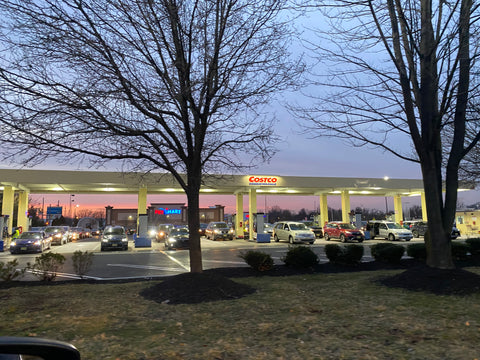
Almost everyone has a vehicle to get around by themselves in this day and age, and gas has become an apparent requirement. But why is Costco’s gas so cheap? By reducing the gas rate, they are actually at an advantage. When a gas station sells at lower prices, they attract customers to the vicinity of their warehouse and motivate them to look around the shop in the gas station. Thus, Costco indirectly ends up selling more products.
People who want to go frugal on gas come to cheaper gas sources like Costco. So even though they may sell at a low price, the number of buyers increases by a substantial amount, and more people are likely to go in and check out the other products in the store.
Rotisserie Chicken :
Who can deny a phenomenal tasting Rotisserie chicken at the end of a long shopping haul? It’s not just a shopper’s right, but they totally deserve it! And what could be more enticing than the slashed price of $4.99?
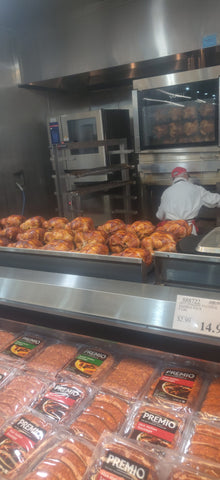
Costco uses this ingenious tactic. The Rotisserie chicken they sell works as an incentive for drawing customers. So even though they may lose millions annually from selling this at a low rate, they peg their customers by their chickens. The customers, in turn, buy a vast array of other products and compensate for the loss incurred by selling the low-priced chickens.
This is how a loss leader works. But Costco can’t be categorized into this as it uses this strategy more leniently and gently. That’s why Costco’s products prices are an absolute steal, and a few such as these are even lesser.
Hot dogs and Sodas :
Costco seems to use different but popular food items as a loss leader. The hot dog and soda combination, which they sell for less than $2, is another example. Though hot dogs have generally been lower in rates, they’re even more down in Costco. Further, the duo deal successfully lures even the younger population, thus increasing the target population and number of customers.
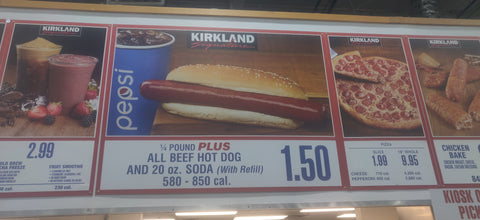
When customers buy the cheap hot dog-soda combo at the end of their shopping episode, they leave the store with a happy, satisfied feeling of being well treated. As a result, they are determined to come back and thus become Costco’s loyal customers. Costco believes losing a few bucks per person is worth it for the sake of customer satisfaction. As a result, they tap into a broad consumer base.
Tires :
Unlike the above examples, tires at Costco are SLIGHTLY MORE expensive. However, the customers still prefer them. It is because Costco provides enough perks to justify the higher price.
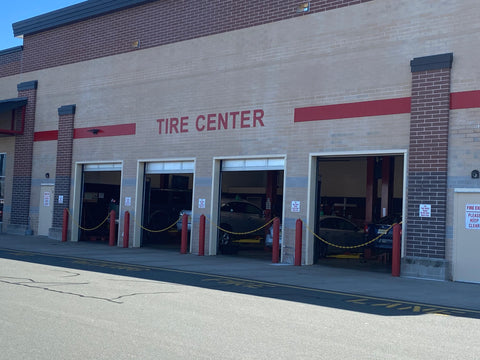
- Free maintenance – Costco provides a five-year road hazard guarantee and lifetime maintenance free of cost. They cover the total price and do not require any additional charges.
- Nitrogen inflation – Costco uses nitrogen to inflate the tires. Nitrogen is advantageous because it keeps the pressure steady and is mostly temperature-proof. It impacts the fuel economy of the vehicle positively too.
Therefore, even if you may have to pay a slightly higher amount initially, you end up saving a lot of money in the long run. On the other hand, spending each time you get a flat tire or any other issues will definitely leave a bigger dent in your wallet.
Fruits and Vegetables :
Since Costco gets deliveries in bulk, they sell in bulk too. Generally, the prices are great for all of these items. Buying in bulk, though, can have a significant disadvantage. Since it is a highly perishable product, some say a chunk is always wasted.
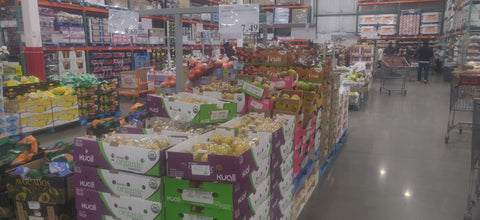
Costco is a thrifty deal as long as you know what you will use and implement a well-thought-out plan for buying your fresh fruits and vegetables.
Costco’s Best Selling Item :
Gas, hot dogs, and Rotisserie chicken sold in Costco put up stiff competition for the best-selling item. However, the best-selling product is not what you would expect at all! The crowing glory of Costco remains, till this day, toilet paper.
They sell over a billion rolls annually. With this, they easily compensate for all the loss they sustain through their loss leaders. And this humble winner sells so effortlessly well because of Costco’s marketing strategies that have attracted so many customers to their store.

